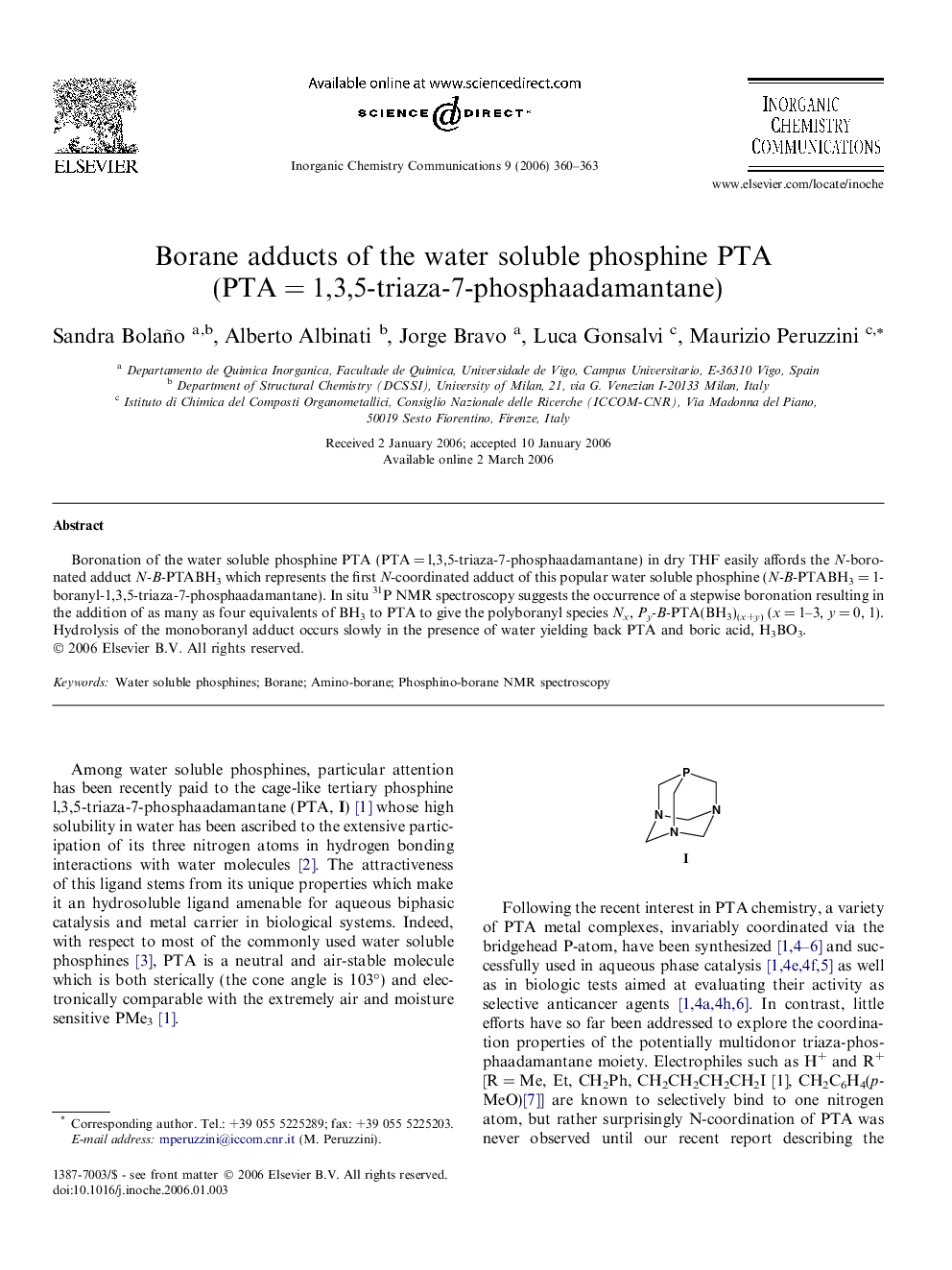| Article ID | Journal | Published Year | Pages | File Type |
|---|---|---|---|---|
| 1305160 | Inorganic Chemistry Communications | 2006 | 4 Pages |
Boronation of the water soluble phosphine PTA (PTA = l,3,5-triaza-7-phosphaadamantane) in dry THF easily affords the N-boronated adduct N-B-PTABH3 which represents the first N-coordinated adduct of this popular water soluble phosphine (N-B-PTABH3 = 1-boranyl-1,3,5-triaza-7-phosphaadamantane). In situ 31P NMR spectroscopy suggests the occurrence of a stepwise boronation resulting in the addition of as many as four equivalents of BH3 to PTA to give the polyboranyl species Nx, Py-B-PTA(BH3)(x+y) (x = 1–3, y = 0, 1). Hydrolysis of the monoboranyl adduct occurs slowly in the presence of water yielding back PTA and boric acid, H3BO3.
Graphical abstractBoronation of the water soluble phosphine PTA in dry THF affords the N-boronated adduct N-B-PTABH3, which represents the first N-coordinated adduct of this popular water soluble phosphine (N-B-PTABH3 = 1-boranyl-1,3,5-triaza-7-phosphaadamantane). In situ 31P NMR spectroscopy suggests the occurrence of a stepwise boronation, resulting in the addition of as many as four equivalents of BH3 to PTA to give the polyboranyl species Nx, Py-B-PTA(BH3)(x+y) (x = 1–3, y = 0, 1). Hydrolysis of the monoboranyl adduct occurs slowly in the presence of water yielding back PTA and boric acid; H3BO3.Figure optionsDownload full-size imageDownload as PowerPoint slide
